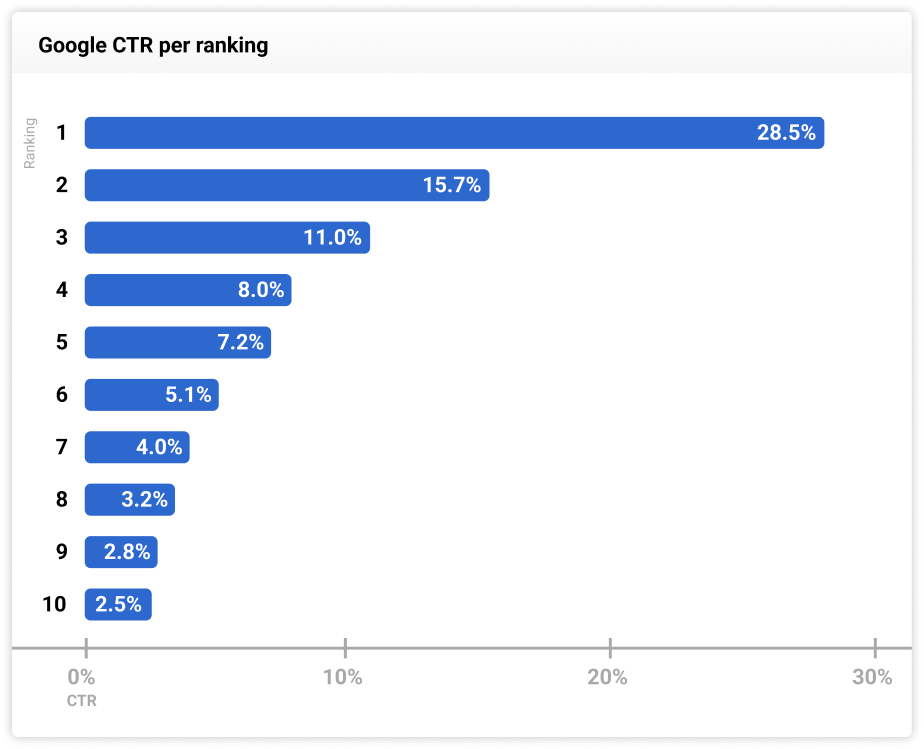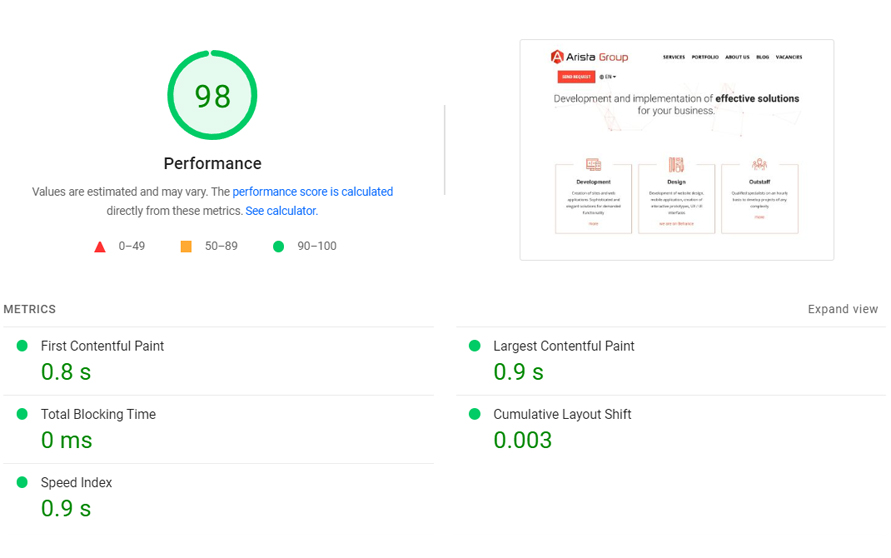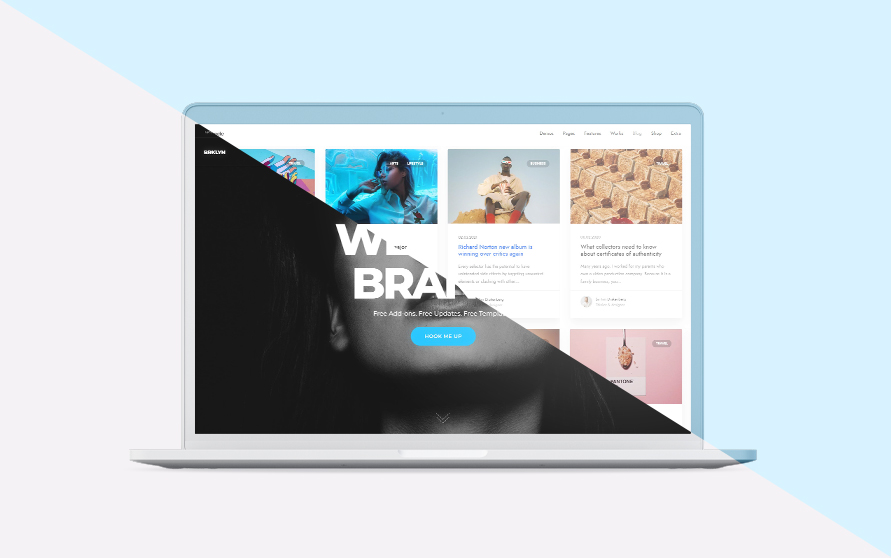
The challenge for site owners is to balance the need to be both user friendly and SEO friendly, especially for a site that offers hundreds of products.
What is SEO-friendly web design and why is it important?
SEO web design is the process of designing a website in such a way that it is optimized for search engines. A custom site designed from the ground up with SEO in mind will have a much higher chance of ranking first in the search results for that niche.
Let's discuss some of the most significant benefits of web design SEO.
Increase organic traffic
Traffic that comes to your site naturally is any traffic that has not been paid for, such as visitors from search engines. These are the visitors who found your site after doing a Google search and seeing the top results.

In particular, more than a quarter of all clicks are on the first search result, 15% are on the second search result, and there is a sharp decline from there.
Seeing that only 2.5% of clicks go to the 10th result, it's safe to say that any organic traffic outside of the first page is terrible. To increase your chances of ranking higher in the SERPs, you should optimize your site as much as possible.
More high-intent traffic
Google searches are usually done because someone has a specific query they want to search for information on. If the exact answer to their question appears on your page, they are more likely to click on it.
They may not apply right away, but now they know where to look for answers to similar questions in the future. Your website must be optimized for higher search engine rankings in order to get high traffic.
Improved User Experience
The key to earning Google's favor is to optimize your site for SEO as well as make it user friendly.
Google has improved its ranking system to take into account user experience related metrics. Some of these metrics include:
- Bounce rate
- Mobility
- Time on page
UX optimization of your website is an integral part of your marketing strategy. This will ensure that your site is easy to navigate so that visitors can find the information they need.
In order not to influence the user experience of its own users, Google wants to rank only the best sites. In other words, a highly ranked site inspires trust and also helps the user find exactly what they are looking for.
How to optimize your design for SEO?
Having learned why SEO web design is important, let's discuss how you can optimize your website.
More than 200 factors determine the ranking of a site in the Google search algorithm. It's nearly impossible to account for all of these factors, no matter the size of your project team. Instead, the best SEO companies focus on the following elements:
1. Page load speed
Websites that take a long time to load are terrible for users and bad for SEO. Page loading speed is a proven ranking factor for Google, and you don't need to be a UX expert to know that slow page loading is incredibly frustrating from a user perspective. You can check page loading speed on PageSpeed Insights.

So what can you do to speed up your site? There are a few tips, some of them design-related, like lazy loading, a design pattern that delays the rendering of certain objects until they are absolutely necessary (for example, loading images below the fold only when the user starts scrolling the page) . Others are more technical in nature and may require developer assistance, such as optimizing images and minifying CSS, JavaScript, and HTML code.
2. Adaptive design
People expect a seamless experience no matter what device they use to access a site. Responsive design may not be a proven ranking factor, but it is clearly recommended by Google - and of course it maintains a consistent UX across all devices.
Considering that over 60% of website traffic comes from mobile devices, adaptive design should be a priority when creating and optimizing a website.
3. Navigation and layout
Likewise, the overall navigation and layout of your site should be designed to make it as easy as possible for the user to navigate.
Your site structure serves two purposes: from the UX side, it should provide a clear, logical path for your users to follow as they navigate the site. In terms of SEO, it provides a "roadmap" for search engines, giving an overview of all the content on the site and how it relates to each other.
If users can easily navigate your site, not only will you tick the usability box, you will also benefit from increased SEO.
4. User interface design
Last but not least, make sure the site's UI design is set up to make a good impression.
Template sites are not needed for active promotion and lead generation, but simply as business cards so that the client can get acquainted with information about the company. As a rule, for such businesses, the Internet is not the main source of customers: buyers come offline. But for large companies that work mainly online, an individual, conceptual website design and well-thought-out functionality are needed. With the help of them, they will be able to keep potential buyers, impress them, and persuade them to make a deal.

Of course, Google doesn't rate the visual appeal of a site, but people do it very quickly. If your site is terrible, many users won't linger on it. They will look for a more aesthetically pleasing site. For Google, this means a high bounce rate, which will inevitably affect your rankings.
Search engines are able to capture the visitor's actions on the site. Using certain algorithms, search engines make a conclusion about whether the visitor was comfortable on the site, whether he found the necessary information. For example, a visitor comes to a site with a clumsy design and leaves almost immediately. Search engines fix the page that a person came to and from which he left and add to this all the time spent on the site. Accordingly, the longer a person has stayed, the better, which means that such a site is better, more convenient and useful, which means it should be higher in search results. Here is such an indirect relationship between unique design and SEO.
Accept that SEO is more than just keywords
It is true that SEO depends on the use of relevant keywords. However, it is also important to create engaging, creative, and informative content. Simply adding keywords to your content will not bring good results and may even backfire as some sites get blacklisted due to keyword stuffing.
The need for a balance between SEO and web design is stronger than ever thanks to the ubiquity of mobile devices. Driving traffic to a website is as difficult as getting a visitor to stay on a website page. Only the perfect combination of design and SEO can help achieve both goals. User experience should be at the center of all design and content efforts.
